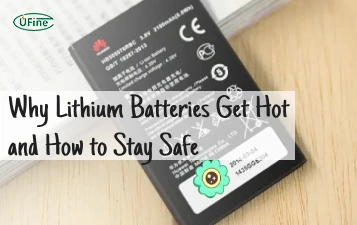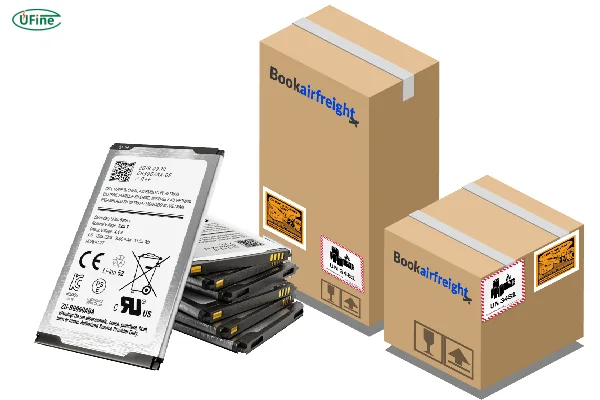
- Part 1. Global standards: IATA, ICAO, and the United Nations
- Part 2. United States: DOT, PHMSA, and FAA regulations
- Part 3. European union: ADR, EASA, and national agencies
- Part 4. China: CAAC, CCC certification, and export rules
- Part 5. Japan: METI and Civil Aviation Bureau
- Part 6. Australia: ADG Code and CASA enforcement
- Part 7. Canada: transport Canada and TDG regulations
- Part 8. United arab emirates: GCAA, customs, and free zones
- Part 9. India: DGCA and MoRTH
- Part 10. Common challenges, enforcement trends, and best practices
- Part 11. Conclusion
Lithium batteries power the modern world. They are found in smartphones, laptops, power tools, electric vehicles, drones, and more. However, their high energy density, combined with their flammable electrolyte and risk of short-circuiting, makes them a hazardous material during transportation. Fires and explosions linked to improper battery shipping have led to increasingly strict regulatory oversight across the globe.
This in-depth article explores lithium battery shipping regulations across major countries and jurisdictions, including global frameworks and national implementation. Whether you are a manufacturer, exporter, freight forwarder, or compliance officer, understanding these rules is vital to ensuring safe, legal, and uninterrupted delivery.
Part 1. Global standards: IATA, ICAO, and the United Nations
International lithium battery transportation is governed by a hierarchy of regulatory bodies:
- UN Recommendations on the Transport of Dangerous Goods: This foundational framework assigns lithium-ion batteries (UN3480, UN3481) and lithium-metal batteries (UN3090, UN3091) specific UN numbers. It also mandates UN38.3 testing, which includes:
Altitude simulation
Thermal cycling
Vibration
Shock
External short circuit
Impact and crush tests
- International Civil Aviation Organization (ICAO): ICAO issues Technical Instructions for air transport based on UN guidelines.
- International Air Transport Association (IATA): IATA Dangerous Goods Regulations (DGR) are based on ICAO rules but provide practical, industry-specific implementation guidance. Updated annually, the DGR defines packaging requirements, state and operator variations, labeling, documentation, and personnel training standards.
- International Maritime Dangerous Goods (IMDG) Code: This governs lithium battery shipping by sea and aligns closely with UN guidelines.
Common across all these standards are:
- Mandatory UN38.3 test certification
- Proper classification (e.g., fully regulated vs. excepted quantities)
- Use of lithium battery handling marks and Class 9 hazard labels
- Packaging that prevents short-circuiting and movement
- Restrictions on damaged or recalled batteries
- Comprehensive documentation including Safety Data Sheets (SDS) and declarations
15 FAQs About Battery Manufacturing Safety Testing
Part 2. United States: DOT, PHMSA, and FAA regulations
In the U.S., lithium battery transportation falls under the jurisdiction of:
- PHMSA (Pipeline and Hazardous Materials Safety Administration)
- Federal Aviation Administration (FAA) for air cargo
The U.S. uses the 49 CFR (Code of Federal Regulations), which harmonizes with UN, ICAO, and IMDG standards but includes specific requirements:
Key U.S. Provisions:
- Lithium-ion batteries shipped standalone (UN3480) by air must be at 30% state of charge (SOC) or less.
- Cargo aircraft only restrictions apply to specific configurations.
- Damaged, defective, or recalled batteries are banned from air transport.
- DOT mandates hazardous materials training for employees handling or shipping lithium batteries.
- The U.S. Postal Service (USPS) prohibits standalone lithium batteries in international shipments.
Failure to comply can result in heavy civil penalties from DOT and FAA, sometimes exceeding $100,000 per violation.
Part 3. European union: ADR, EASA, and national agencies
The EU applies the ADR Agreement for road transport and aligns its air transport laws with ICAO and EASA (European Union Aviation Safety Agency) regulations. Member states may also enforce additional national rules.
Key Requirements in the EU:
- ADR training is required for drivers and handlers of lithium batteries in transport.
- Properly tested and certified packaging (per UN standards) must be used.
- Full documentation, including the Multimodal Dangerous Goods Form, must accompany shipments.
- Specific battery configurations (e.g., installed in equipment) may qualify for transport under Special Provisions (SP188, SP230).
Postal operators, such as Deutsche Post/DHL or La Poste, often apply stricter internal policies regarding lithium battery shipping.
Part 4. China: CAAC, CCC certification, and export rules
China, the largest producer and exporter of lithium batteries, applies multiple layers of regulation:
- Civil Aviation Administration of China (CAAC): Applies ICAO/IATA rules for air cargo.
- Ministry of Transport: Oversees road and sea transport.
- China Compulsory Certification (CCC): Certain lithium battery types require CCC testing and certification before sale or export.
Export-Specific Requirements:
- UN38.3 test reports must be submitted during customs clearance.
- A Material Safety Data Sheet (MSDS) is mandatory.
- Packaging test reports (e.g., 1.2m drop tests) may be required.
- Certain Chinese airlines refuse to transport standalone lithium batteries.
Part 5. Japan: METI and Civil Aviation Bureau
Japan integrates international standards through its Ministry of Economy, Trade and Industry (METI) and Civil Aviation Bureau.
Domestic Rules Include:
- UN38.3 compliance
- Submitting a Notification of Import or Manufacture of Hazardous Materials for industrial-scale batteries
- Batteries over a certain capacity must comply with Fire Service Act safety protocols
- Japan Post prohibits many types of lithium batteries in air mail
Japan’s strong consumer safety standards and frequent recalls necessitate diligent documentation and labeling practices.
Part 6. Australia: ADG Code and CASA enforcement
Australia follows ICAO/IATA rules for air freight and applies the Australian Dangerous Goods Code (ADGC) for road and sea shipments.
Important Details:
- Shippers must ensure compliance with Part 3.6 of the ADG Code, including classification, marking, and packaging.
- Batteries must have documentation confirming they passed UN38.3.
- Australia Post generally prohibits standalone lithium batteries in the mail.
- Some regional airlines may impose further restrictions or require pre-approval.
Part 7. Canada: transport Canada and TDG regulations
Canada’s regulatory framework is based on the Transportation of Dangerous Goods (TDG) Act, enforced by Transport Canada.
Canadian Shipping Requirements:
- Classification under UN3090/3091 or UN3480/3481
- Packages must display the lithium battery mark, including phone number and UN code
- Training certification for employees involved in battery handling or documentation
- Alignment with IMDG for sea freight
TDG permits use of both English and French labeling; all documentation must be bilingual.
Part 8. United arab emirates: GCAA, customs, and free zones
The UAE acts as a logistics hub, especially through airports in Dubai and Abu Dhabi.
Key Oversight Agencies:
- GCAA (General Civil Aviation Authority): Oversees air transport.
- Dubai Customs and Abu Dhabi Ports: Monitor compliance at shipping terminals.
Shipping Requirements:
- Full adherence to IATA/ICAO regulations
- Pre-approval or permits may be required for bulk lithium shipments
- Batteries must be declared with MSDS and safety testing results
- Businesses in free zones like JAFZA must follow internal safety and labeling guidelines
Part 9. India: DGCA and MoRTH
India applies ICAO standards for air cargo and follows domestic road regulations enforced by the Ministry of Road Transport and Highways (MoRTH).
Key Indian Practices:
- DGCA requires all air shipments to follow IATA DGR guidelines
- Road transport must meet standards in the Central Motor Vehicles Rules
- Packages must contain proper labeling, hazard marks, and declarations
- eWay bills may be required for intra-India battery transport
- Defective or returned batteries must be segregated and documented separately
Part 10. Common challenges, enforcement trends, and best practices
Despite a shared international framework, shipping lithium batteries remains one of the most complex compliance areas in logistics.
Challenges Include:
- Evolving regulations and inconsistent national implementation
- Carrier-specific restrictions (e.g., Emirates, FedEx, Japan Airlines)
- Language barriers in documentation
- Misclassified or improperly packaged shipments
Recent Trends:
- Airlines and maritime carriers increasingly refuse or limit battery shipments
- Customs authorities scrutinize lithium battery cargo more than ever
- Penalties and shipping delays have risen sharply since 2020
Best Practices for Shippers:
- Always reference the latest IATA DGR edition (published annually)
- Partner with a certified freight forwarder experienced in battery logistics
- Maintain a full set of documentation: UN38.3 reports, MSDS, product specification sheets, packing certificates, and emergency response information
- Train all staff involved in shipping, packing, and documentation
- Run internal audits of your shipping workflows to identify risk
Part 11. Conclusion
As lithium battery usage proliferates globally, the risks and responsibilities tied to their transportation grow. Ensuring safe, compliant, and efficient logistics requires understanding both the global regulatory framework and each destination country’s local interpretations.
By staying informed, proactively updating processes, and working with experienced logistics providers, organizations can safely navigate the complex world of lithium battery shipping and avoid costly delays, fines, or accidents.
Related Tags:
More Articles

Why Lithium Batteries Get Hot — Causes, Risks, and Safety Tips
Find out why lithium batteries get hot, how to cool them safely, and ways to prevent overheating for better performance and safety.
100AH Golf Cart Battery Life: How Long Can It Last?
Wondering about your 100AH golf cart battery's lifespan? Find out what affects its longevity and how to keep it running longer. Read now!
What Is a Battery Disconnect and Why You Should Use One?
Learn how a battery disconnect switch prevents power loss, improves safety, and extends battery life for cars, RVs, boats, and solar systems.
Do Car Battery Testers Really Work Accurately?
Discover how car battery testers work, their accuracy levels, and which type gives the most reliable results for your vehicle.
Why Do Batteries Get Sulfated and How Can You Prevent It?
Learn what causes sulfated car batteries, how to fix them with desulfation charging, and expert tips to prevent future battery damage and failure.



